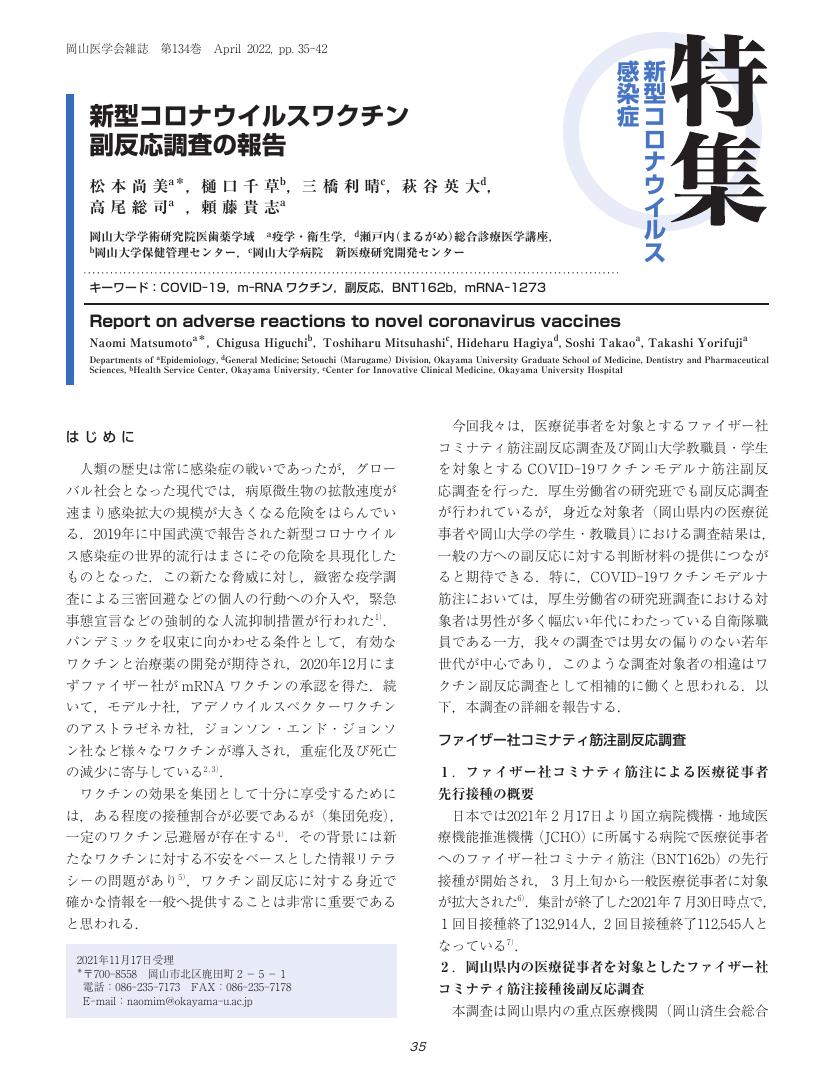61 0 0 0 OA 医学における因果推論 第一部 ―研究と実践での議論を明瞭にするための反事実モデル―
- 著者
- 鈴木 越治 小松 裕和 頼藤 貴志 山本 英二 土居 弘幸 津田 敏秀
- 出版者
- 一般社団法人日本衛生学会
- 雑誌
- 日本衛生学雑誌 (ISSN:00215082)
- 巻号頁・発行日
- vol.64, no.4, pp.786-795, 2009 (Released:2009-10-02)
- 参考文献数
- 53
- 被引用文献数
- 2 1
A central problem in natural science is identifying general laws of cause and effect. Medical science is devoted to revealing causal relationships in humans. The framework for causal inference applied in epidemiology can contribute substantially to clearly specifying and testing causal hypotheses in many other areas of biomedical research. In this article, we review the importance of defining explicit research hypotheses to make valid causal inferences in medical studies. In the counterfactual model, a causal effect is defined as the contrast between an observed outcome and an outcome that would have been observed in a situation that did not actually happen. The fundamental problem of causal inference should be clear; individual causal effects are not directly observable, and we need to find general causal relationships, using population data. Under an “ideal” randomized trial, the assumption of exchangeability between the exposed and the unexposed groups is met; consequently, population-level causal effects can be estimated. In observational studies, however, there is a greater risk that the assumption of conditional exchangeability may be violated. In summary, in this article, we highlight the following points: (1) individual causal effects cannot be inferred because counterfactual outcomes cannot, by definition, be observed; (2) the distinction between concepts of association and concepts of causation and the basis for the definition of confounding; (3) the importance of elaborating specific research hypotheses in order to evaluate the assumption of conditional exchangeability between the exposed and unexposed groups; (4) the advantages of defining research hypotheses at the population level, including specification of a hypothetical intervention, consistent with the counterfactual model. In addition, we show how understanding the counterfactual model can lay the foundation for correct interpretation of epidemiologic evidence.
- 著者
- 鈴木 越治 小松 裕和 頼藤 貴志 山本 英二 土居 弘幸 津田 敏秀
- 出版者
- 一般社団法人日本衛生学会
- 雑誌
- 日本衛生学雑誌 (ISSN:00215082)
- 巻号頁・発行日
- vol.64, no.4, pp.796-805, 2009 (Released:2009-10-02)
- 参考文献数
- 56
- 被引用文献数
- 3 3
Confounding is frequently a primary concern in epidemiological studies. With the increasing complexity of hypothesized relationships among exposures, outcomes, and covariates, it becomes very difficult to present these hypotheses lucidly and comprehensively. Graphical models are of great benefit in this regard. In this article, we focuse on directed acyclic graphs (DAGs), and review their value for confounder selection, categorization of potential biases, and hypothesis specification. We also discuss the importance of considering causal structures before selecting the covariates to be included in a statistical model and the potential biases introduced by inappropriately adjusting statistical models for covariates. DAGs are nonparametric and qualitative tools for visualizing research hypotheses regarding an exposure, an outcome, and covariates. Causal structures represented in DAGs will rarely be perfectly “correct” owing to the uncertainty about the underlying causal relationships. Nevertheless, to the extent that using DAGs forces greater clarity about causal assumptions, we are able to consider key sources of bias and uncertainty when interpreting study results. In summary, in this article, we review the following three points. (1) Although researchers have not adopted a consistent definition of confounders, using DAGs and the rules of d-separation we are able to identify clearly which variables we must condition on or adjust for in order to test a causal hypothesis under a set of causal assumptions. (2) We also show that DAGs should accurately correspond to research hypotheses of interest. To obtain a valid causal interpretation, research hypotheses should be defined explicitly from the perspective of a counterfactual model before drawing DAGs. A proper interpretation of the coefficients of a statistical model for addressing a specific research hypothesis relies on an accurate specification of a causal DAG reflecting the underlying causal structure. Unless DAGs correspond to research hypotheses, we cannot reliably reach proper conclusions testing the research hypotheses. Finally, (3) we have briefly reviewed other approaches to causal inference, and illustrate how these models are connected.
14 0 0 0 IR 水俣病 : 民主主義と正義のための挑戦 (足立明先生追悼号)
- 著者
- 頼藤 貴志 津田 敏秀 原田 正純
- 出版者
- 熊本学園大学水俣学研究センター
- 雑誌
- 水俣学研究 (ISSN:18840124)
- 巻号頁・発行日
- no.6, pp.103-138, 2015-03
1 0 0 0 新型コロナウイルスワクチン副反応調査の報告
1 0 0 0 OA 水俣病 : 民主主義と正義のための挑戦 (足立明先生追悼号)
- 著者
- 頼藤 貴志 津田 敏秀 原田 正純
- 出版者
- 熊本学園大学水俣学研究センター
- 雑誌
- 水俣学研究 = Journal of Minamata studies (ISSN:18840124)
- 巻号頁・発行日
- no.6, pp.103-138, 2015-03-31
1 0 0 0 OA 大気汚染の疾病罹患・死亡・出生児アウトカムに与える影響の検討
国内では大気汚染の健康影響を評価した疫学研究は依然として少ない為、下記目的を達成するために研究を行った。①短期曝露と疾病罹患の関連評価、②短期曝露と疾病別死亡の関連評価、③大気汚染曝露と周産期指標の関連評価、④大気汚染曝露と児の疾病罹患との関連評価。結果として、①では短期曝露により、循環器疾患、呼吸器疾患、心停止による救急搬送のリスクが上昇していた。②においては、日々の二酸化硫黄の濃度と疾病別死亡との関連を認めた。③に関しては、曝露モデルの検討を行っており、更なるデータ蓄積と解析を行う予定である。④に関しては、妊娠中の曝露は満期低出生体重児を増加させ、発達にも影響を及ぼしていた。
